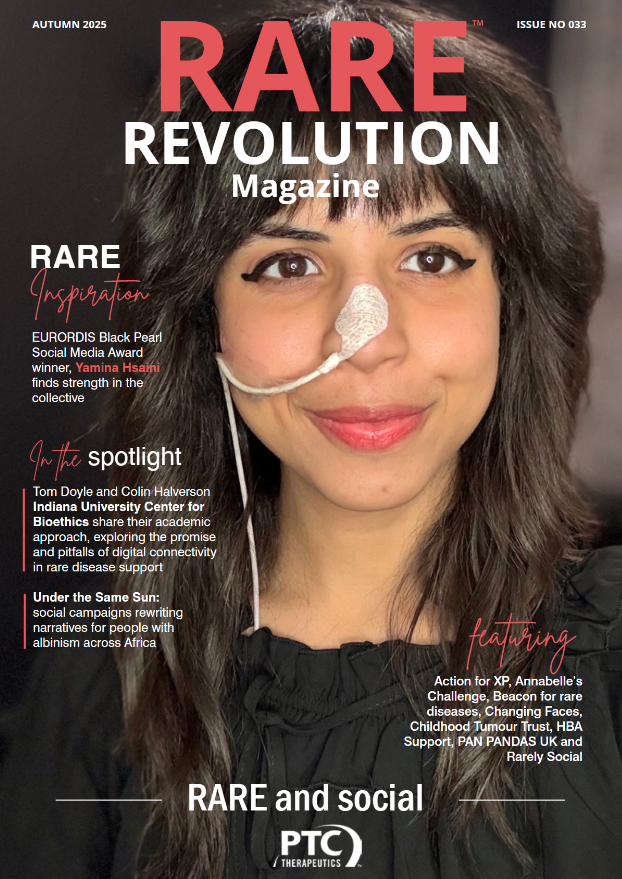Spinal cord stimulation: A new perspective for SMA research

The SMArt Horizon project is a collaborative initiative of SMA Europe and the SMA Foundation. Largely financially supported by FundAME through its Calendar Funds, Spierziekten Nederland and SMA Schweiz, it aims to identify innovative therapies for SMA, including exploring spinal cord stimulation (SCS) for people living with SMA. Seda Karakaya and Emilia Debska, of SMA Europe explain more
Written by Seda Karakaya, Patient Advocate and SMA Europe Youth Group Member and Emilia Debska, Communications and Marketing Manager at SMA Europe
Edited by Nicole Gusset, CEO, SMA Europe and Federica Fontana, Research and Medical Manager at SMA Europe
At the forefront of this research is Dr. Marco Capogrosso, an accomplished researcher in SCS, who led the first in-human study investigating the use of epidural spinal cord stimulation to enhance function in people with SMA. His team’s innovative work is providing new insights into the potential of this therapy.
Among the study’s participants is Carmen, who shares her experiences as one of the few people living with SMA to undergo this innovative potential treatment. Her journey offers a unique perspective on the study’s impact.
Let’s explore the study’s findings and the important role of advocacy in advancing SMA research.
Could you please say a few words about yourself?
Dr. Marco Capogrosso:
I was born in 1985 in Manduria, a town in Puglia, in the South of Italy. It’s a place known for its wine, stunning beaches, and great food. I have a Bachelor’s Degree in Physics, a Master’s Degree in Applied Physics from the University of Pisa, and a PhD in Biomedical Engineering from the Scuola Sant’Anna in Pisa. There, I worked on electrical stimulation of the nervous system and robotic systems. My journey in spinal cord stimulation began during my post-doctoral training at EPFL (École Polytechnique Fédérale de Lausanne) in Lausanne, Switzerland.
I have a wide range of interests, from high-end cuisine, hiking, and sports like tennis and basketball to a deep love for science and culture. Most of all, I am passionate about my work as a scientist, which has been my greatest love since childhood.
Carmen:
“My name is Carmen. I’m 20 years old, and I’m from Madrid, Spain. I’m studying genetics, and I play wheelchair hockey and wheelchair football.”
What inspired you to begin your research in the SMA field?
Dr. Marco Capogrosso:
Two key factors. First, the science itself. I read the work of Prof. George Mentis on the disease development and the underlying motor disorders. It just clicked in my head that the technology I was working on for spinal cord injury could actually be used even more effectively for SMA.
Second, it was the mothers. I met so many mothers of children with SMA. Starting from Loren of the SMA Foundation to Mencia and the others at FundAME and SMA Europe. Man, if you want to change the world, nothing is more powerful than the strength of a mother trying to help her child. I just felt humbled in front of such strength. I couldn’t do it. I could not be that strong. But they are incredible. Just incredible. I look at my children and I hope I could be just half as strong as these mums.
So, these mums, what did they do? They charged me with my responsibility. This isn’t the same game that I played when I was five to match the dinosaur bone. These are their children. I can help them. So, I have the responsibility to do it. And to do it seriously. And this understanding changed my career.
What inspired you to pursue epidural spinal cord stimulation research, and how did you become involved in the SMArt Horizon project?
Dr. Marco Capogrosso:
I started working in spinal cord stimulation because when I was about to finish my PhD, the first works showing that SCS may work to improve motor control.And I was shocked that nobody knew how it worked. I figured that I had the right knowledge to work on that because I was a physicist, and I had worked on my whole PhD with Silvestro Micera on electrical stimulation of neurons. Here was a pristine scientific field that could make a huge clinical impact. Therefore, I throw myself at the challenge, and I think I contributed significantly to the theory of how SCS improves motor neuron function in the human spinal cord.
Like I said above, once I knew this, I just had to connect the dots between what I knew and the research in SMA. I was then encouraged to explore the field because they realised that we needed new assistive technologies now that SMN (survival motor neuron) therapies are available. So here I am.
How did you first hear about the SMArt Horizon study, and what motivated you to participate? What were your initial thoughts when you learned about spinal cord stimulation as a potential treatment for SMA?
Carmen:
The first time I heard about this project was in October 2024, at the conference organised by FundAME (SMA family foundation in Spain). In this conference, Genis Prat-Ortega, one of the researchers, came to talk to us about this project, and the truth is that I found it very interesting since I had never heard anything like this when it comes to a potential new treatment for SMA.
My first thoughts when I found out about this study and the results it was giving were that I thought it was amazing to see someone with SMA improving and gaining strength so quickly. This had never been possible before.
As a researcher, what has been the most rewarding aspect of working on this first-in-human study?
Dr. Marco Capogrosso:
Again, two things:
First, the patients. What incredible people! I know people think that I say this because I should, right? But no, I mean it. What incredible people! Every one of them, intelligent, motivated, happy. An incredibly rewarding human experience. You certainly know that many people think of people with disability with pity. They are sad for them. But interacting with our participants made me happier, healthier at a fundamental human level. Significantly enriched my emotional story. These people are just incredible. This community, wow. I don’t know why that is, maybe you have that answer.
Second is the results. I have never in my life had an experiment more successful and replicable than this one. And coupling that with the smile of our patients as they work with our team made the story of my career.
If spinal cord stimulation becomes more widely accessible, what specific aspects of daily life do you think it could impact the most for people who live with SMA?
Carmen:
I think this study can help many people with SMA, since there are very simple things that we can’t do because, over the years, we have been losing our strength. Thanks to this therapy, I think we can recover some of the day-to-day skills that we have lost. These things can be actions as simple as opening doors, taking objects from shelves… I think this could help people who can’t perform actions, such as eating or brushing their teeth, to do it independently.
This is a great advance, since it means that we can be more autonomous in our everyday lives.
Looking ahead, what are the biggest challenges and opportunities in bringing spinal cord stimulation from research to real-world application for individuals with SMA?
Dr. Marco Capogrosso:
There are enormous regulatory and business challenges. Convincing companies that it is worth pursuing this, that somebody will make money out of it. It’s frustrating and very hard. But Gregoire (my post-doc mentor) once told me: “A problem shows its worth by fighting back”. And we will fight.
What did you like the most about this adventure, apart from participating in the study itself?
Carmen:
It has been a great experience.Even though I had to leave everything I was doing in Spain to go to the United States for seven weeks, it has been incredible. Being able to be there and meet another culture, improve my English and meet other people, like all the team I have been with all this time, has been incredible. I’m very, very grateful for all their work and what is being achieved with this trial. I’m convinced that their work will change many lives. That’s why I hope this potential new treatment reaches many more people with SMA soon.
What did you like the most about working with Carmen and her mother?
Marco Capogrosso:
They brought the sun to Pittsburgh during the darkest and coldest period of the year. When I think back to February, the first thing that comes to mind is their smile and the smiles of my incredible team members, Serena Donadio, Genis Prat-Ortega, Scott Ensel, and Julia Ostrowski.
What role do you think patient organisations may play in future research projects focusing on SMA?
Marco Capogrosso:
Increasing awareness in the patient population and clinicians—and potentially putting pressure on regulatory bodies and large companies to support the development of medical devices for small but underserved patient populations.
What message would you like to share with the SMA community about the importance of patient involvement in studies like this?
Carmen:
As a patient, I think it is very important that we get involved in these types of studies. If we want more treatments to be found for SMA and, one day, hopefully, to have a cure, people who live with SMA must participate. In my case, it is the second study in which I participate, and I think it is very important that people participate, because… if we don’t, who will?
For more information about the SMArt Horizon initiative, visit the website: https://www.sma-europe.eu/smart-horizon or contact us at communications@sma-europe.eu


